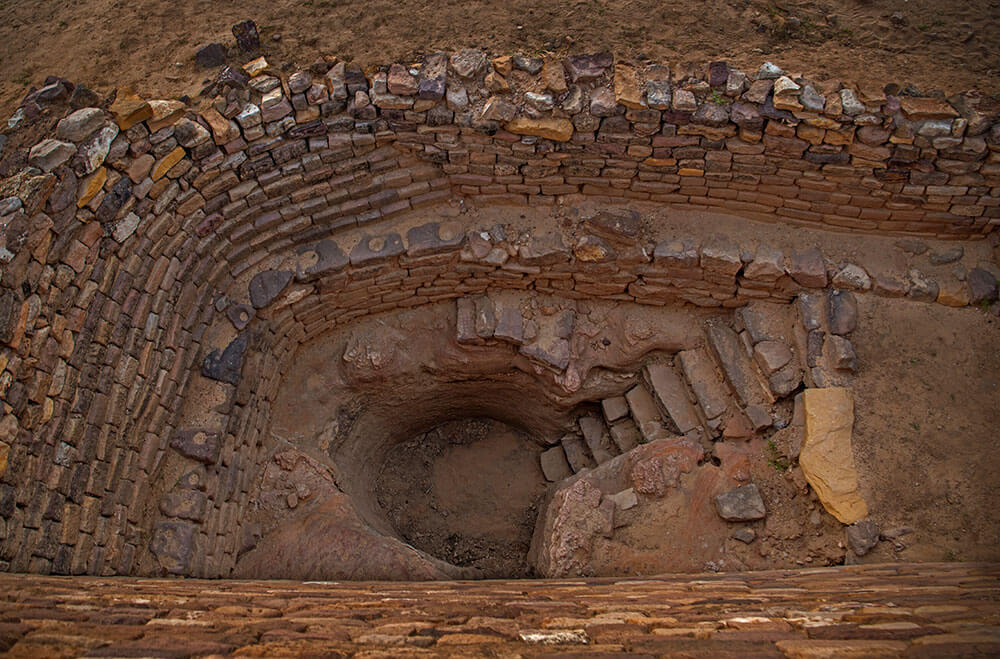🗿Lost Cities of Gujarat: Exploring Lothal & Dholavira

The Lost Cities of Gujarat aren’t just piles of old stones — they’re stories frozen in time. And not boring textbook stories either. We’re talking about Lothal Harappan City and Dholavira UNESCO Site, two iconic sites among the Lost Cities of Gujarat. Two ancient cities that were once alive with trade, architecture, and surprisingly advanced thinking.
They weren’t forgotten. Just buried. Waiting for us to come looking again.
⏳ A Time-Travel Walk Through the Lost Cities of Gujarat
When we say “modern,” we often forget that thousands of years ago, people were figuring out things we still struggle with — managing water, building organized towns, even setting up trade routes.
Gujarat’s Lost Cities — Lothal Harappan City and Dholavira, part of the Indus Valley Civilization in Gujarat? These cities nailed it.
Lothal, close to the sea, was buzzing with ships. Dholavira, out in the desert, survived with zero rivers in sight. That’s not just survival — that’s brilliance.
⚓ Lothal Harappan City: A Lost Maritime Hub of Gujarat
📍 So, Where Exactly is Lothal?
Lothal sits near Saragwala village in the Ahmedabad district. Among the Lost Cities of Gujarat, Lothal is especially known for its maritime trade links, just about 78 km from the city. A quick drive, and you’re in the past.
🏛️ When Was It Found?
Back in 1954, folks at the Archaeological Survey of India were digging around and stumbled upon it. The name “Lothal” actually means “Mound of the Dead.” Sounds dramatic, but… kinda fitting.
🔍 Why It’s Special
What makes Lothal Harappan City a gem among Harappan Civilisation sites in Gujarat?
- The Dockyard: Probably the oldest in the world. A whole dock — in ancient India — where ships possibly came from as far as Mesopotamia? That’s next-level.
- City Layout: Streets and houses laid out neatly, drains that worked, and a proper plan.
- Beads & Trade: This place was a hub for bead-making — using stones, shells, you name it.
- The Seals: Carved seals with symbols — still a mystery. But clearly, they had their own system of records or maybe even a script.
🛕 Dholavira UNESCO Site: Desert Architecture of the Indus Valley Civilization
📍 Where is Dholavira Hiding?
Well, not hiding — just remote. It’s on Khadir Bet, a salty island in the Rann of Kutch. It’s a bit of a drive from Bhuj, but it’s worth every kilometer.
🧭 What’s the Story Here?
The Dholavira UNESCO Site, one of the finest ancient cities in Gujarat, holds global recognition.
Dholavira was discovered in 1967. Its significance among the Lost Cities of Gujarat was officially recognized when UNESCO granted it World Heritage status in 2021. It made it to the UNESCO World Heritage list. A proud moment — but more than that, a reminder that this place is something the world should pay attention to.
🧱 What Made Dholavira a Marvel?
- Three-Part City Design: Divided into the citadel (important folk lived there), the middle section, and the lower town — all separated by stone walls.
- Water Genius: No river nearby, yet tanks, canals, stepwells — it’s like they knew exactly how to survive droughts.
- A ‘Stadium’: No one’s fully sure, but it seems like a public space — maybe for sports or big meetings.
- The Signboard: Yep, a massive slab with ten Harappan symbols found near the gate. Could be the oldest signboard on the planet.
🌵 A City That Didn’t Fight the Desert — It Listened
Everything about Dholavira feels… intentional. They used local stone, planned for harsh seasons, and reused water. Not bad for people living 4,000 years ago.
❓ Why Did These Cities Just… Disappear?
No one has a solid answer. But there are guesses:
- Droughts may’ve gone on for too long.
- Rivers might’ve shifted or dried up.
- Trade networks probably collapsed.
- Maybe they just moved on.
Whatever happened, it didn’t happen in one day. These cities faded slowly, leaving behind questions and clues.
📌 Why Even Visit Ruins?
Well — because they’re not just ruins. They’re proof of the brilliance behind the Lost Cities of Gujarat.
- You get a deep connection to something bigger than yourself.
- The planning and architecture? Sometimes even smarter than what we see today.
- Plus, visiting supports heritage tourism in Gujarat.
- Perfect for curious travelers, school kids, or anyone tired of looking at history only in books.
🛣️ Travel Tips & Details
✈️ Getting to Lothal
- From Ahmedabad: 78 km
- Entry Fee: Super cheap (especially for what you get)
- Best Time: October to March
🚗 Getting to Dholavira
- Nearest Hub: Bhuj, ~220 km away
- Stay: Government guesthouses or desert-view resorts
- Best Time: November to February (no kidding, skip summer)
🔚 Final Thoughts: Lost Cities of Gujarat That Still Speak to Us
The Lost Cities of Gujarat — Lothal Harappan City and Dholavira UNESCO Site — are more than historical sites of the Indus Valley Civilization in Gujarat.
They don’t demand your attention. That’s the magic of the Lost Cities of Gujarat — they don’t shout; they invite you to look deeper.
So take a moment, leave the city noise behind, and walk through these ancient paths.
You’ll probably leave with more questions than answers…
But maybe that’s the point.
The cities of Lothal and Dholavira were once thriving centers of trade and culture. To understand them better, we must examine the History of Gujarat and its geography, which carried forward this ancient legacy.
